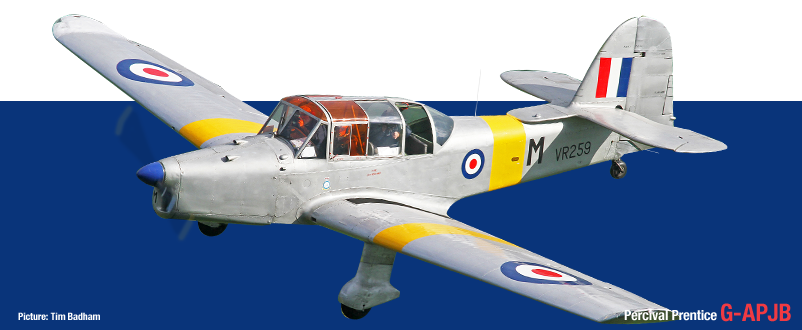
G-AMSV Returns to Coventry
An old friend returned to Coventry yesterday when G-AMSV, in her striking Indian Air force livery, landed here for extensive maintenance by our engineers. Sierra Victor was part of the Air Altantique fleet here for many years. She'll...
Baginton Air Pageant
The initial details for the Baginton Air Pageant are up on the website! As we don't have the space for a full-on air show attracting 20,000 or so people, we're aiming for low-key, themed days like this. A couple of thousand people,...
Newquay Pleasure flights
We promised we'd be back to fly in Cornwall, and here we are. We'll be heading south with a Rapide and Chipmunk to spend a week at Newquay from 25th July, with a further visit planned in August. The flights are bookable in the normal...
New Dakota Book
Geoff Jones just told me that his new book on the DC-3, released to celebrate the 80th anniversary of the Dak's appearance, is now available. The cover sports a lovely shot of G-ANAF, shot by Simon Westwood before her radome goiter was...
Nimrod Engine Run
We've just confirmed plans by NPT to run all four of the Nimrod's Rolls-Royce Speys on Saturday 9th May. We expect the thunder to start just after lunchtime. Come along and enjoy some audio power - and please dip into your pockets...


The Prentice basic trainer was Percival's first foray into manufacturing all-metal aircraft. It first flew in 1946 in answer to an Air Ministry requirement for a simple, robust basic trainer. Deceptively large for a single engined machine, the Prentice was originally designed for a new engine to be developed by de Havilland. When this project was cancelled, the 251hp Gipsy Queen was fitted, leaving the Prentice noticeably under-powered.
Initial test flights were disappointing, with the prototype demonstrating poor rudder control. The solution was to increase the size of the cut-outs in the elevators, allowing the rudder a greater range of movement. Later aircraft were fitted with up-turned wingtips, and our example carries this modification. Spin recovery was also found to be poor, a characteristic which was cured by the fitting of large "table-top" strakes ahead of the fin.
When the Prentice was replaced in 1953 by the far superior Provost, most of the sadly unloved aircraft went into storage. A few remained in service for air signals training, being withdrawn from service in 1956.
Attracted, no doubt, by the giant cockpit, travel entrepreneur Freddie Laker bought 252 of the redundant Prentices in 1956. They were converted to carry four passengers in the rear cockpit. With a full payload of six (and in one case seven!), climb rate could be measured with a calendar, especially in hot weather. The operation's commercial success was as expected and the aircraft slid into disuse.
Never a success, and always something of an ugly duckling, the Prentice seemed doomed to extinction. G-APJB is one of a tiny handful of survivors.

